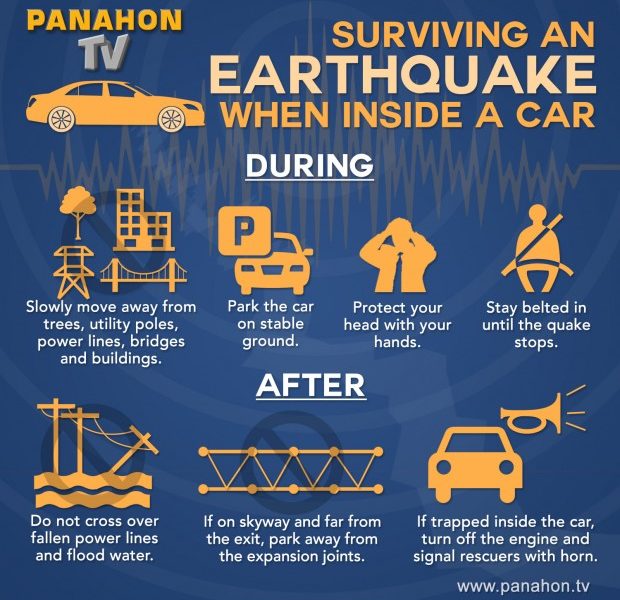Home > Blog > Disaster Preparedness
Preparing for Huge Quakes

The Philippines lies in the Pacific Ring of Fire where the most number of volcanic and seismic activities are recorded. Provinces at risk to earthquakes include Surigao Del Sur, La Union, Benguet, Pangasinan, Pampanga, Tarlac, Ifugao, Davao Oriental, Nueva Vizcaya and Nueva Ecija. But the Greater Metro Manila Area (GMMA) is no exemption to tremors due to the Valley Fault System that may generate a quake with a magnitude of 7.2 –as powerful as 63 Hiroshima atomic bombs. To prevent casualties and damage to properties, here is what we need to know.
Being Quake Ready
1. Check your house for hazards for earthquakes and other secondary threats such as landslides, flooding, liquefaction and fires. If your house is erected within the 5-meter buffer zone from each side of the fault line, it is best to transfer to a safer place.
2. Make sure that your house is structurally sound.
3. Assemble your own Bug Out Bag.
4. Have a printed copy of the emergency hotlines.
5. Participate in office, school and community drills.
6. Hold occasional drills at home with the entire family.
7. Cascade emergency plans to your family. It is important to decide how, where and when to meet after an earthquake.
8. Turn off water, electricity and gas when not in use.
9. Know how to give first aid and Cardio Pulmonary Resuscitation (CPR).
Protecting Yourself During a Quake
1. Stay calm but be alert and keep your eyes open.
2. When inside a structure, do the Duck, Cover and Hold.
3. If no sturdy table is around, go against an interior foundation wall and cover your head with your arms. Remember to move away from objects that may fall, break, explode and cause electrocution.
4. If inside a movie house or a stadium, stay in your seat and cover your head with your arms.
5. When in a crowded building, do not rush for exits and stay away from falling debris.
6. When in a wheelchair, stay in it, lock your wheels and protect your head.
7. If you’re outdoors, move to an area away from posts, trees, buildings, electrical wires and poles.
8. When driving, move to the side of the road and stop.
9. If near the shore, go to higher grounds with your bug out bag.
After the Quake
1. If inside a structure, safely and calmly exit to avoid stampede. Use the stairs instead of elevators. Proceed to areas clear of falling and collapsing objects.
2. Do a headcount of your family and check for injuries. If someone has serious injuries, do not attempt to move him and call for medical assistance.
3. If trapped inside a building, wave a handkerchief or any cloth in the window to signal rescue. If you have whistles, use it. If there is no any window, stay in a safe area and do not touch any damaged appliance.
4. If outdoors, do not cross bridges, flyovers and tunnels. Do not enter damaged buildings.
5. When inside a car, park in the nearest place clear of falling debris and tall structures.
6. If it’s already safe, check for fire hazards, damaged utilities, wired telephone lines, and structural aspects in your house. If damages occur, evacuate and do not re-enter until proper repairs are done.
7. Wear gloves, facemask, boots or shoes when cleaning leakages. Stay away from fallen power lines and the possible conductors near them.
Do not walk in barefoot while checking the house.
8. Be prepared for aftershocks by knowing where to duck, cover and hold. Aftershocks may happen hours, days, weeks and even months after the main shock.
9. Get involved in community post-disaster plans and projects.


